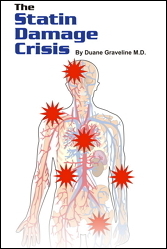What About HDL?
Van der Steeg and others (1,2) published a very relevant paper on the high-density lipoprotein (HDL) particles we have been hearing so much about in past years. It is not an easy read nor is HDL a simple molecule. High-density lipoproteins are fairly complex large molecules composed of triglycerides and a special form of cholesterol known as esters, wrapped in an envelope of fatty acids, phosphorus, free cholesterol and biochemicals known as apolipoproteins (apoA-1).
These have a role in cell wall structure in addition to previously unrecognized thrombolytic and anti-inflammatory actions. Some researchers have postulated that inhibition of nuclear factor-kappa B (NF-kB) is the primary mechanism for accomplishment of this action. NF-kB is the mechanism by which statin drugs seem to exert their benefit in atherosclerosis control.
These authors state that from a clinical viewpoint, cardiovascular risk determination may be much more accurate if risk assessment is based on a more precise measurement of HDL metabolism than HDL-C that gives a measure of cholesterol alone. They have found that a high plasma apoA-1 more uniformly represents lower risk and would serve as a much more precise marker of atherosclerosis tendency. What they are saying, and they are not alone, is that if we want to measure something to determine risk, perhaps it should be apoA-1.
There has always been something positive about the HDL fraction of serum lipids. Although I feel very comfortable with the philosophy based on all unbiased current research that cholesterol is irrelevant to the process of atherosclerosis, I have sensed that the positive role of HDL-C has always been far more believable than the negative role of LDL-C.
After all, so many of the vital processes within our bodies are based upon cholesterol - memory function in the brain (3), as substrate for most of our life-sustaining hormones and as the building material in each of our billions of cells. This substance is perhaps the most vital and important biochemical in our bodies. It cannot at the same time be our greatest public health enemy. Simple logic dictates otherwise.
Now to find that this apoA-1 component of the HDL-C macromolecule provides thrombolysis, anti-oxidation and anti-inflammation, all apparently mediated by NF-kB inhibition puts apoA-1 in a functional category not too distant from the good that statins do - the NF-kB inhibition of Ora Shovman (4). Now if we take another look at HDL-C, we might more easily view it in the role nature intended, that of assisting the healing process.
1. JACC Vol. 51, No. 6, 2008 van der Steeg et al. 641
February 12, 2008:634-42 HDL-C, HDL Particle Size, ApoA-I, and CAD Risk
2. Genest JACC Vol. 51, No. 6, 2008, Editorial Comment February 12, 2008:643-4
3. Pfrieger F. Cholesterol homeostasis and function in neurons of the central nervous
system. Cell Mol Life Sci 60:1158-1171, 2003
4. Shovman O and others. Anti-inflammatory and Immunomodulatory properties of statins. Immunol Res 25(3): 272-85, 2002
Duane Graveline MD MPH
Former USAF Flight Surgeon
Former NASA Astronaut
Retired Family Doctor






